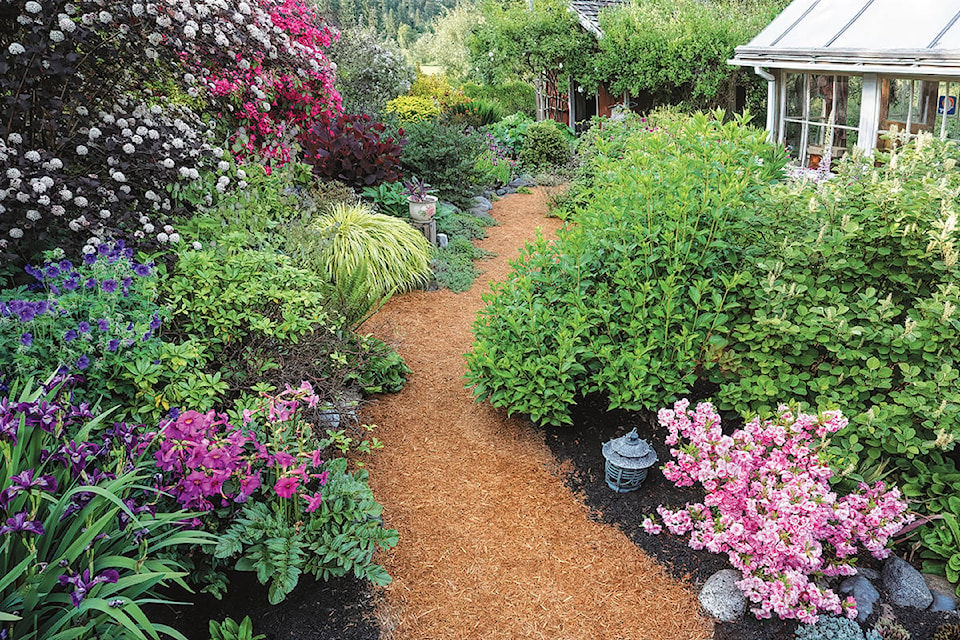Leslie Cox
Special to The Record
It is the time of year when we start to think about getting out into our garden… when the weather allows. Any break in the rain means I drop whatever I am doing and head outside to pick up where I left off in the garden. Unless, of course, I am in the middle of preparing a meal for John or Sadie. Some things in this house are categorically not to be messed with under any circumstances.
Meal-making aside, there have been other weather-enforced bans on my gardening activities where I blatantly defied household chores and immersed myself in reading all things garden-related. A gardener has to get their “fix” somewhere, after all.
So…as a result of my reading material, here’s a question for you. What is a garden for?
According to Sir James Dyson, founder of Dyson Ltd., his garden evolved through, or because of, his “incessant tinkering.” He professes to love established gardens but cannot resist continually digging things up in his own. Calls it preservation but admits it is really all about having big projects. He enjoys the “playful fight” of trying to raise his garden out of its perpetual state of adolescent disobedience. Makes it more endearing in his eyes…and enduring.
But according to Diane Abbott, a British politician, her garden represents a “private haven” and a “place of retreat.” She grows peonies, like her mom, and longs for a lilac tree reminiscent of her childhood. She struggles to maintain a lawn despite her shady garden being unsuitable for one - and for which she has no time to mow. She has planted roses in the shade, willing them to flower for her. Given all of this, Diane readily admits her garden has “nothing to do with aesthetics or practicality” but everything to do with what “a garden means to her emotionally.”
Horror of horrors, Troy Scott Smith, head gardener at Sissinghurst Castle Gardens, claims his primary focus for the gardens is “romance and sexuality.” According to him, Sissinghurst has lost its way.
“In becoming a totem of horticultural perfectionism, it has forgotten what it really is.”
He believes the gardens should be allowed to rest… even fade a little. His worry is too many visitors to the gardens are just “ticking a box” beside a must-see English garden when they should be experiencing feelings of warmth, coziness and everything else one would want to feel in a love affair, especially in Sissinghurst Gardens.
Dr. Sandra Knapp, a plant researcher at the Natural History Museum in London, states “a garden is a window on the world.” Thanks to past- and present-day plant explorers, gardeners have easy access to a wide range of specimens from around the world. We select plants from Argentina and Japan, placing them in our garden beside plants from Europe, India and western Canada. She says “gardens are a microcosm of diversity.” They are a “slice of life” giving us insight into the sheer scale and wonder of life on Earth. “In a garden, we are reminded that we are not the only species.”
Ray Billington, an English philosophy lecturer, claimed no garden could ever be perfect because change is of the essence. Therefore, “to seek perfection is as futile as pursuing the Holy Grail.” He said gardeners should “aim for a state of mind which exists amicably with imperfection.” Much better to lie back and enjoy the garden rather than lying awake at night worrying about it.
This is why gardens are therapeutic. They slow our “frenetic desire for hive-like activity,” reminding us that we cannot improve on nature.
Oh, boy! Playful fight, private haven, romance and sexuality, diversity, accepting imperfection; let the gardening season begin!
Leslie Cox co-owns Growing Concern Cottage Garden in Black Creek. Her website is at www.duchessofdirt.ca and her column appears every second Thursday in the Record throughout the spring and summer months.
